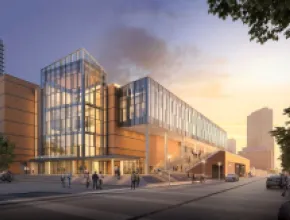Luxury is in. During the recovery, corporate America has found that without a doubt resort meetings play a crucial role, whether for training, sales or as a performance incentive. The AIG Effect, which stole the headlines more than four years ago, has largely disappeared into history.
This is despite a continuing backdrop of economic uncertainty. With growth, though, has come greater scrutiny over spending.
Properties in areas that primarily serve leisure demand are especially benefiting. Of the hotel categories listed by Smith Travel Research (STR)—resort, urban, suburban, airport, interstate and small metro/town—resort was seeing the largest increase in room rates. It was also experiencing the smallest increase in new rooms coming onto the market.
“There’s a lack of new supply, very few new rooms and a healthy growth in demand, which gives resort hotel operators pricing power,” says Jan Freitag, STR’s senior vice president, global development.
For 2013, he expects to see “more of the same”—limited supply and increasing demand. Group room rates generally, he says, are still lower than they were in 2007.
According to STR, for the first 10 months of 2012, resort occupancy nationwide stood at 65 percent, up 2.4 percent over the same period in 2011. At $142.16, the average daily rate (ADR) for resorts was up 4.9 percent over the 2011 period, the category’s largest ADR growth. New resort inventory was up 0.2 percent, the lowest in the category; urban hotels, the highest, had a 0.7 percent inventory growth. Resort rooms sold were up 2.6 percent.
“Luxury is back. We started to see it in 2011,” says Gary Schirmacher, senior vice president, strategic account services at Experient, a Maritz Travel Company. “Incentive groups were one of the hardest hit. Now companies are realizing the impact incentive programs can have on their future revenue growth. Many are finding if they do invest in meetings, the return is significant. We also are seeing an increase in spend on training meetings. Most companies will tell you that talent retention is a big priority.”
However, he says, corporate America is now much more aware of costs, is looking to cut waste, debating the length of stay, and contemplating adding an education component. PageBreak
Back, But Cautious
“Luxury is Back! Cautiously back. Luxury resorts are no longer a pariah, but corporate accountants learned a thing or two over the past couple of years and their memory is long. They are watching the meeting budget as closely as if it were 2008,” trumpets Benchmark Hospitality International’s Top Ten Meeting Trends report, issued last February.
That topped the list of the top trends from the Houston-based company, which operates 26 U.S. hotels and resorts, half with the word “resort” in their name, and which is also prominent in the conference center industry.
“There are still great values out there, although it is definitely improving for properties. I still think it is a buyer’s market overall,” says Hal Powell, Benchmark’s regional vice president, sales and marketing, who adds that though the trends have remained accurate since the report came out, business is not yet back to 2007 levels in most markets.
According to Powell, there has been a growth in product launches and for meetings for new hires, especially in banking, law, accounting and consulting.
“In some cases, annual sales meetings have been making a comeback at our larger properties where before they broke into regional meetings,” he says. “Bookings are still short-term but they’re a lot further out. And we’re seeing a return to theme parties, although with not so much over-the-top spending.”
Team-building events, he says, continue to increase but are shorter—“half-day or evening—and they are all about creativity and fun.”
The Ritz-Carlton, Kapalua on Maui is doing well, according to Tom Donovan, the property’s vice president and general manager. Group spending in 2012, he says, was not quite as robust as it was in 2011, although with pent-up demand he is optimistic for a good 2013.
“Groups based on some sort of performance incentive are our bread and butter and account for 80 percent of group business,” he says. “We’re seeing a lot more of them. They’ve been growing but are not quite back to their peak level yet. Incentives give companies a tremendous sales lift.”
He further explains that Oahu is back to its peak visitor level of 2006, but outer islands such as Maui are not there yet but are moving in the right direction. For the first 10 months of 2012, Hawaii had 6.6 million visitors, up 9.5 percent over the same period last year, according to the Hawaii Tourism Authority.
Tony Bartlett has been covering the hospitality industry for more than 20 years.






